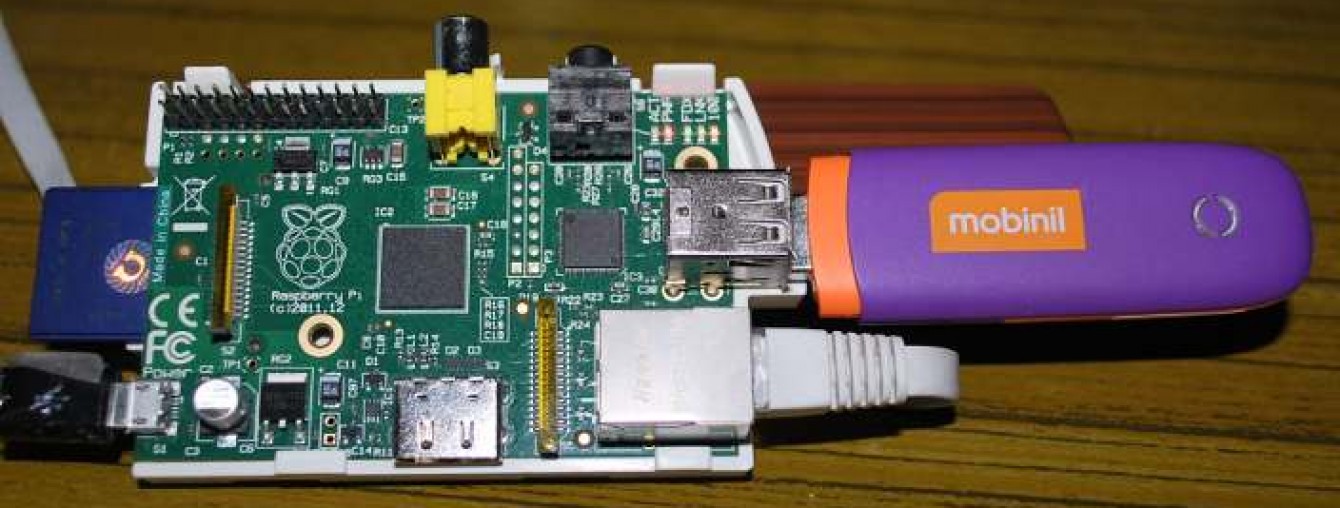HOWTO: Boot your Raspberry Pi into a fullscreen browser kiosk
http://blogs.wcode.org/2013/09/howto-boot-your-raspberry-pi-into-a-fullscreen-browser-kiosk/
HOWTO: Boot your Raspberry Pi into a fullscreen browser kiosk
It seems there’s some demand for knowledge of setting up a full-screen, browser-based kiosk on the all-singing Raspberry Pi. Here at Watershed we’ve done this, to drive the screens of our digital signage system. Although we complicate matters a bit (we net-boot the pis, which requires a few extra tweaks – see our blog post on net-booting raspberry pis), we thought it’d be useful to document what we achieved: automatically running Chromium, full-screen, with a single kiosk-mode web-page.
Step 1: Initial setup
For the most part, we’ve used a stock Raspbian image, updated to the latest versions; but we’ve then installed several additional packages:
- matchbox
- chromium
- x11-xserver-utils
- ttf-mscorefonts-installer
- xwit
- sqlite3
- libnss3
To do this, run the commands:
sudo apt-get update sudo apt-get dist-upgrade sudo apt-get install matchbox chromium x11-xserver-utils ttf-mscorefonts-installer xwit sqlite3 libnss3
Step 2: Automatic resolution detection
This was the hardest part for us because we have several monitors of slightly different native resolutions and, through net-booting, only wanted to have one filesystem-image presented to all the Pis. After a few days’ tinkering, I came up with this strategy: set the internal framebuffer to as large as it can be, then detect the monitor’s capabilities and adjust. If you know exactly what resolution your monitor is, just tweak the config.txtfile and skip the rest of this step!
So, first set the framebuffer up by adding this to /boot/config.txt:
# 1900x1200 at 32bit depth, DMT mode disable_overscan=1 framebuffer_width=1900 framebuffer_height=1200 framebuffer_depth=32 framebuffer_ignore_alpha=1 hdmi_pixel_encoding=1 hdmi_group=2
Next, add this to /etc/rc.local; it waits for a monitor to be attached to the HDMI socket, probes it for its preferred mode, sets that preferred mode and finally resets the framebuffer ready for X to takeover:
# Wait for the TV-screen to be turned on... while ! $( tvservice --dumpedid /tmp/edid | fgrep -qv 'Nothing written!' ); do bHadToWaitForScreen=true; printf "===> Screen is not connected, off or in an unknown mode, waiting for it to become available...\n" sleep 10; done; printf "===> Screen is on, extracting preferred mode...\n" _DEPTH=32; eval $( edidparser /tmp/edid | fgrep 'preferred mode' | tail -1 | sed -Ene 's/^.+(DMT|CEA) \(([0-9]+)\) ([0-9]+)x([0-9]+)[pi]? @.+/_GROUP=\1;_MODE=\2;_XRES=\3;_YRES=\4;/p' ); printf "===> Resetting screen to preferred mode: %s-%d (%dx%dx%d)...\n" $_GROUP $_MODE $_XRES $_YRES $_DEPTH tvservice --explicit="$_GROUP $_MODE" sleep 1; printf "===> Resetting frame-buffer to %dx%dx%d...\n" $_XRES $_YRES $_DEPTH fbset --all --geometry $_XRES $_YRES $_XRES $_YRES $_DEPTH -left 0 -right 0 -upper 0 -lower 0; sleep 1;
Step 3: Launching Chromium
With that all done, the installation needs to be told to start-up X using a tailored xinitrc(kept on the boot-partition so that it can easily be edited on a non-Linux machine) by adding the following to /etc/rc.local:
if [ -f /boot/xinitrc ]; then ln -fs /boot/xinitrc /home/pi/.xinitrc; su - pi -c 'startx' fi
And the xinitrc file looks like this:
#!/bin/sh
while true; do
# Clean up previously running apps, gracefully at first then harshly
killall -TERM chromium 2>/dev/null;
killall -TERM matchbox-window-manager 2>/dev/null;
sleep 2;
killall -9 chromium 2>/dev/null;
killall -9 matchbox-window-manager 2>/dev/null;
# Clean out existing profile information
rm -rf /home/pi/.cache;
rm -rf /home/pi/.config;
rm -rf /home/pi/.pki;
# Generate the bare minimum to keep Chromium happy!
mkdir -p /home/pi/.config/chromium/Default
sqlite3 /home/pi/.config/chromium/Default/Web\ Data "CREATE TABLE meta(key LONGVARCHAR NOT NULL UNIQUE PRIMARY KEY, value LONGVARCHAR); INSERT INTO meta VALUES('version','46'); CREATE TABLE keywords (foo INTEGER);";
# Disable DPMS / Screen blanking
xset -dpms
xset s off
# Reset the framebuffer's colour-depth
fbset -depth $( cat /sys/module/*fb*/parameters/fbdepth );
# Hide the cursor (move it to the bottom-right, comment out if you want mouse interaction)
xwit -root -warp $( cat /sys/module/*fb*/parameters/fbwidth ) $( cat /sys/module/*fb*/parameters/fbheight )
# Start the window manager (remove "-use_cursor no" if you actually want mouse interaction)
matchbox-window-manager -use_titlebar no -use_cursor no &
# Start the browser (See http://peter.sh/experiments/chromium-command-line-switches/)
chromium --app=http://URL.of.your/choice.html
done;
And that’s all there is to it; just (re)boot your Pi and it should boot, detect the screen and optimise for it, start X, launch Chromium and be ready with your chosen web-page in kiosk-mode!
Bonus Step 4: Accelerated X11 Server
Currently, the default X11 server isn’t exactly optimised for the Raspberry Pi; however, work is afoot and you can install a work-in-progress version fairly easily. This has worked for us and has been nice and stable. YMMV.
First, download xorg-server.tar.gz and xserver-xorg-video-fbdev.tar.gz from Simon J Hall’s latest release on github and extract them to the Pi:
sudo tar xfvz xorg-server.tar.gz -C / sudo tar xfvz xserver-xorg-video-fbdev.tar.gz -C /
Next, edit /usr/share/X11/xorg.conf.d/01-fbdev-rpi.conf and change MboxFile to/dev/char_dev and finally, add the following to /etc/rc.localbefore X11 is launched (i.e. before the bit added in Step 3 above:
if [ ! -e /dev/dmaer_4k ]; then
printf "===> Preparing to launch X...\n";
modprobe dmaer_master
major=$(awk '$2=="dmaer" {print $1}' /proc/devices)
mknod /dev/dmaer_4k c $major 0
mknod -m 664 /dev/char_dev c 100 0
chgrp pi /dev/char_dev
fi;
